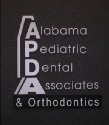Did you know there was an official color for Dentistry? Yes, Lilac was chosen in 1897 by the National Association of Dental Faculties. It inspires compassion, purpose, and inspiration.
Here is a graduation gown for one of my classmates for her AGD (Academy of General Dentistry) ceremony. My cap and gown were nearly identical to this when I graduated from dental school. I wondered why all the bright color? Why purple, lavender or whatever this was? (It's Lilac). Now, I am pleased with this great color for our profession. It's happy, professional and beautiful.
More here: on the Symbols of Dentistry
Saturday, June 09, 2018
Subscribe to:
Post Comments (Atom)








3 comments:
Purple is the color of royalty!
I have read through your blog and find it interesting. You mentioned in a post that you can estimate when the disruption occurred to cause enamel hypoplasia. If a child has extremely mild hypoplasia on the bottom outside edge of each front upper tooth, when do you estimate the problem occurred?
Here is my attempt at an ASCII diagram of the two front teeth with an x marking the location of the hypoplasia (or fluorosis):
| | |
| | |
|x | x|
-----------
In general sense, incisal edges tend to mineralize before other parts, but a trauma at the right time can affect any part. Thing is, most of the time, we cannot determine any specific cause. Every child’s tooth development is slightly different. Typically, disruptions begin early, like 2 years of age or earlier for a top front tooth. Mineralization starts for front (permanent) teeth by 3 months of age and lasts for a couple of years and is totally finished by about 4 years of age. Baby teeth begin mineralizing even in utero. Sorry, can't be more specific.
Really ..its different article I read here, read a lot so many article but most of them for about the issues in tooth and all...its different if I say as My
katy dentist always help.
Post a Comment